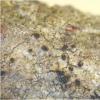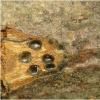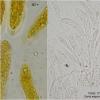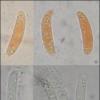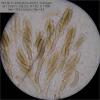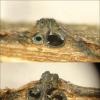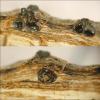
18-12-2025 21:17
Pol DebaenstThe identification took me to Byssonectria deformi

15-12-2025 07:09
 Danny Newman
Danny Newman
indet. Rutstroemiaceae sp. on unk. fallen leavesMc

19-12-2025 10:10
Patrice TANCHAUDBonjour, récolte réalisée en milieu dunaire, a

18-12-2025 17:23
 Bruno Coué
Bruno Coué
Bonjour,je serais heureux d'avoir votre avis sur c

18-12-2025 18:07
Margot en Geert VullingsThese plumes were found on rotten wood.They strong

17-12-2025 18:35
 Michel Hairaud
Michel Hairaud
Bonjour à tous/Hi to everyone I am passing along

15-12-2025 15:48
 Danny Newman
Danny Newman
Melanospora cf. lagenaria on old, rotting, fallen

15-12-2025 15:54
 Johan Boonefaes
Johan Boonefaes
Unknown anamorph found on the ground in coastal sa

15-12-2025 21:11
 Hardware Tony
Hardware Tony
Small clavate hairs, negative croziers and IKI bb
I have Collected a Diatrypaceae on hardwood.
Here are some features:
Perithecia immersed, usually separated, spherical / ovoid with a diameter of 600-900um.
Ostioles emerging separately. With a round shape the diameter is about 350um.
Asci octosporadas on a long pedicel clearly IKI +
Are not mature perithecia and spores are difficult to obtain, however, the size of which are measured are on average 17.7x4.2um, and are slightly allantois.
With these data, I think it might be Cryptosphaeria and within this genre fits better with C.subcutanea.
You can give me your opinion?
Thank you very much, greetings
Susana

again an interesting find. I agree it resembles Cryptosphaeria by many traits but in this genus the wood surface beneath the stromata is typically strongly blackened unlike what shows your photo 2.
I suggest you observe a stroma in vertical section and compare it to Rappaz' description.
Moreover, C. subcutanea which might fit as to ascospore dimensions differs in having inamyloid asci and a fairly boreal distribution on Salix.
Try to find mature ascospores to check whether they become pigmented or stay hyaline.
Good luck!
Jacques
I found mature perithecia, and spores are pigmented, they are brown.
I made cross sections, and I noticed that the perithecia are grouped two to three and their necks are emerging together.
There is a black dorsal line (Fig.2) and in some cases a ventral black line also appears (Figure 3).
Now I think it may be Eutypella dissepta. It can be?
Saludos
Susana

